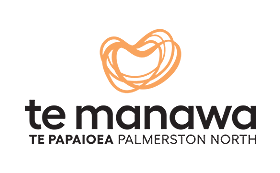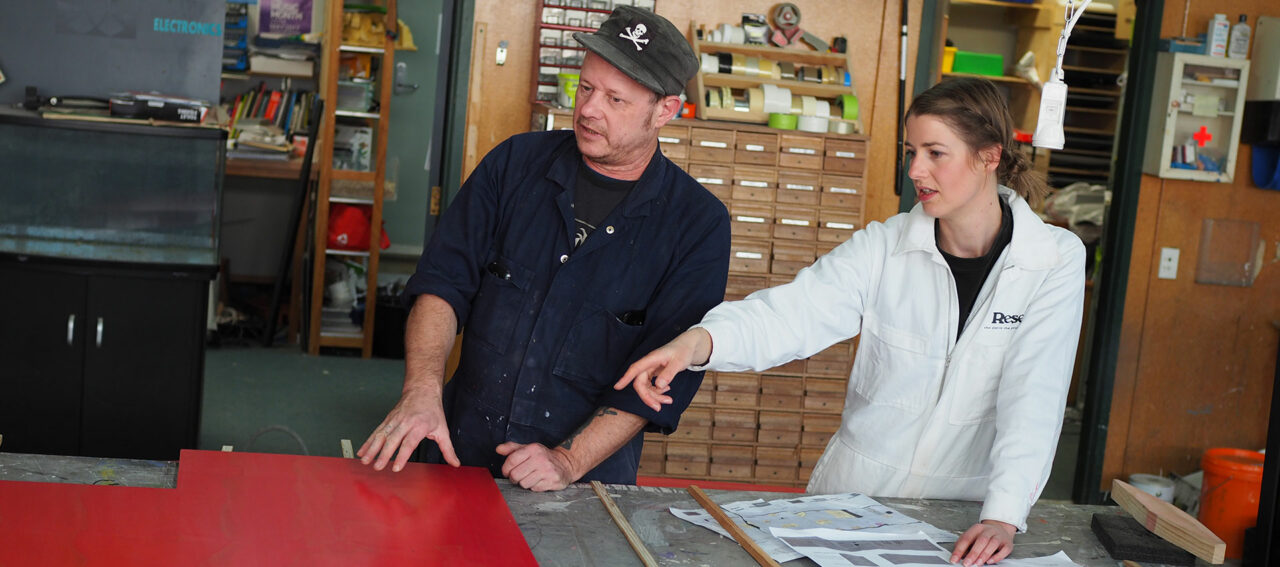Visitors to Te Manawa in May and June will be greeted by an unusual sight. The normally bright and open façade of the KidsTM space has been boarded up, and from behind the hoardings comes the bang of hammers and the occasional skillsaw shriek.
For the first time since the 2011 Te Manawa redevelopment, our children’s exhibition is getting a face-lift. In 2018, our Manawatū Journeys gallery was the first of our semi-permanent exhibitions to have major work put into refreshing its content.
“The nature of semi-permanents is they have a shelf life,” explains Te Manawa programme developer Imogen Stockwell. “They need to be refreshed or redeveloped at some point in their life. Typically, you start working toward that around the 8-year mark.”
It was clear that after Manawatū Journeys, KidsTM needed to be next in line. The team began preliminary planning work in late 2018.
“A place like KidsTM is incredibly high use. It takes a beating, and maintenance issues develop over time,” says Imogen. “A refresh gives us a chance to address some of those while adding new content.”
Imogen and production manager Graeme Slimin took on the project, drawing on the experience and lessons of the Art Gallery refresh in 2018. The Covid-19 lockdown gave the pair additional space to think about things and be more critical about the project’s development. They would bounce ideas off each other over Zoom or a phone call, sometimes pacing around their respective backyards as their plans took shape.
“We were able to come out of lockdown running,” says Graeme.
“Covid has definitely created a window of opportunity to suddenly get it done with the least amount of impact on our visitors,” agrees Imogen. “Our timeline went from five months to eight weeks in order to have it open again for the July school holidays. It’s required a lot of learning from both of us to keep it moving.”
The original 2011 concept was to create a house. Each room would have a different theme, a way to explore and have a tactile learning experience but in a familiar and comfortable setting. The concept has worked well; KidsTM has been Te Manawa’s most visited exhibition, and the house theme will remain.
“The idea’s so solid because the audience is always rotating, so it’s always a brand-new thing for someone,” says Graeme. “A child might first come in at the age of three, and as they progress through to the age of eight they will have different experiences in that space.”
Phase one of the redevelopment tackles the right-hand side of the exhibition: the red kitchen and the purple bedroom. Everything’s been stripped back to its bones. The patterned PVC board on the walls – attractive but a maintenance challenge – is gone, to be replaced with stained wood, for a more natural and contemporary look. The modular design makes keeping the walls in good nick much easier.
“Ease of maintenance was a priority during the development stage,” says Graeme, “so you don’t have to redo a whole wall should a whoopsie happen; you just replace a panel.”
Just as every exhibition has wall panels, they also have text panels. KidsTM was no exception, and after nine years they were in need of an update. The panels have been made more child-friendly, in terms of both literacy and physical placement.
“We’ve had to be very conscious of who we’re making it for, and what the age bracket is,” says Graeme. “We’ve dropped the labels down, dropped the furniture down – brought the whole thing closer to the kids’ level.”
Revisiting all the interpretive panels in the exhibition was a golden opportunity to centre the use of Te Reo Māori.
“Te Reo will now be core aspect of the concept rather than an interpretive tag-on,” says Imogen. At the heart of this was the change of name: “KidsTM” is now “Tamariki”. This was one of the first decisions made, to mark this new chapter of the space’s life.
Bilingual, tactile activities such as object matching teach both languages, and a new story-telling interactive in what used to be the bedroom (now a cosy reading nook) features authors reading their books in Te Reo and English. There will be two stories to begin with, but Imogen says the system can have more and more books added to it as time goes on.
The second phase will begin later in the year with support from Westpac and will feature even more things to discover.
Image: Graeme and Imogen problem-solving in the workshop




